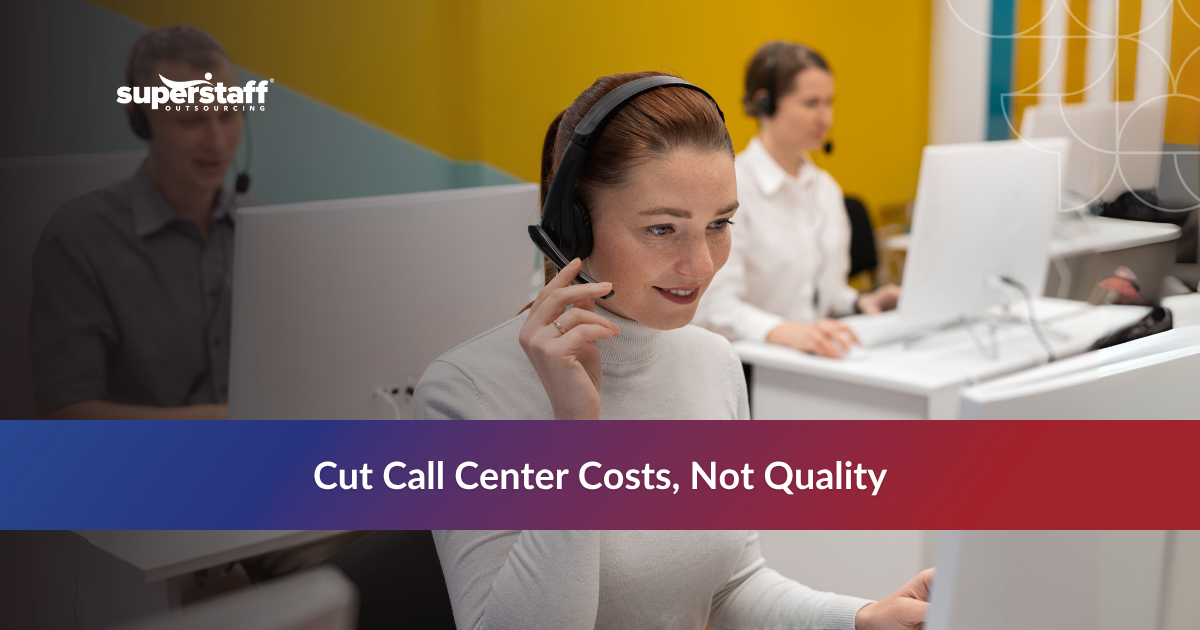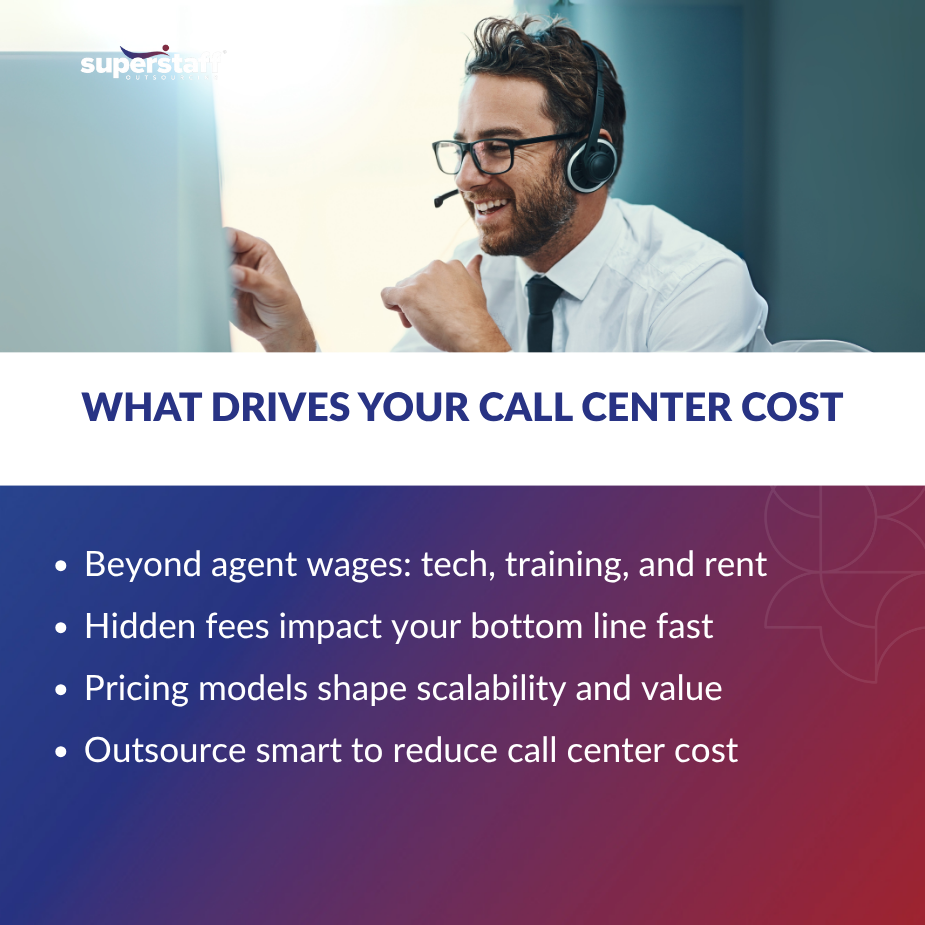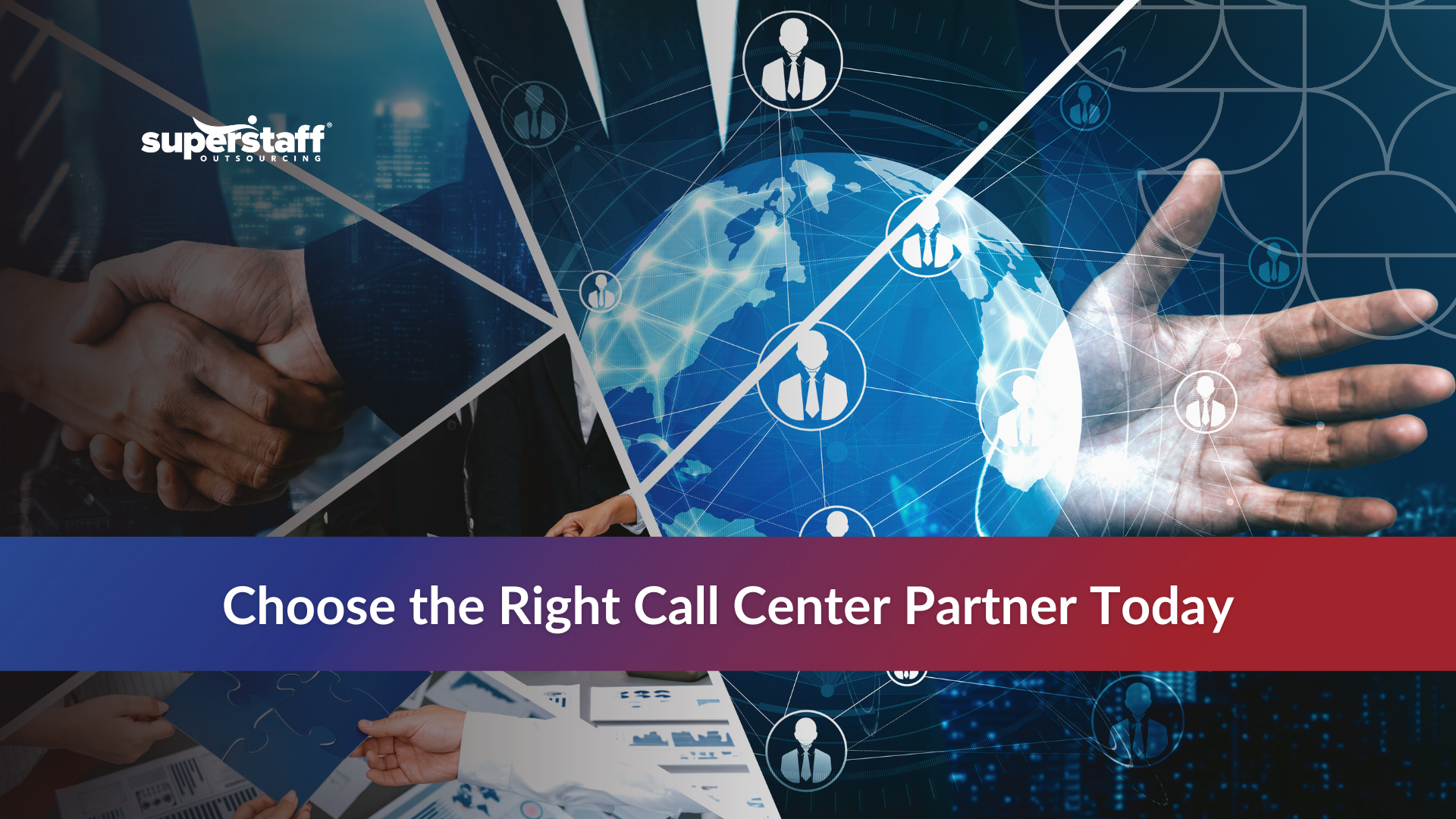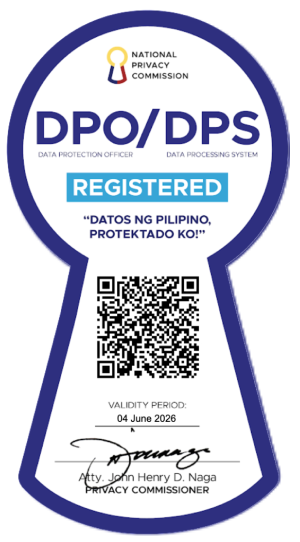
Many business leaders underestimate what goes into call center pricing — until the bills pile up.
You’re not just paying for the voice on the other end of the line. Behind every agent are layers of technology, operations, compliance, and workforce management that all feed into your total call center cost. And unless you’re looking closely, you might not realize how fast those dollars add up.
In this blog, we’ll unpack what you’re really paying for when you run or outsource a call center. We’ll demystify pricing models, expose hidden costs, and show how outsourcing to the Philippines can reduce your call center cost — without sacrificing performance or customer satisfaction.
The True Cost of Running a Call Center Goes Beyond Wages

When companies budget for customer support, they often fixate on salaries. But labor, while significant, is just the start of what drives up your call center cost.
Consider the infrastructure: Every seat requires hardware, headsets, servers, and licenses. Then there’s the physical space — rent, utilities, backup power, and maintenance. Most companies also underestimate the cost of hiring and onboarding. You’re not only recruiting but also investing in initial and continuous training, performance coaching, and compliance certification.
Add to that management overhead: team leads, QA analysts, workforce managers, and trainers who don’t answer calls but are essential to keeping the operation running smoothly. These roles are vital, but they multiply the cost per customer interaction.
When you do the math, your call center cost becomes a tangled web of fixed and variable expenses. And we haven’t even touched the tech stack yet.
Technology Costs Are a Major Line Item — and Often Hidden
Modern customer service doesn’t run on phones alone. Technology is one of the most underestimated contributors to total call center cost.
From CRM systems to omnichannel platforms, businesses need software that enables seamless communication across voice, email, chat, and social media. Then there’s call routing infrastructure, which determines how efficiently inquiries are handled.
You also need real-time dashboards, analytics tools, recording software, and QA systems to monitor performance. And of course, cybersecurity isn’t optional — compliance with data privacy regulations like HIPAA, PCI-DSS, or GDPR demands investment in encryption, monitoring, and access control tools.
Each of these adds another layer to your call center cost — often through monthly licensing, user fees, and required upgrades. Many businesses don’t fully see these expenses until they’re already committed.
As the tools stack up, the pricing model you choose can determine whether your costs spiral or stay manageable.
Understanding the Most Common Call Center Pricing Models
Let’s say you’re ready to outsource — or you already do. How you’re charged affects not only your call center cost, but how predictable and scalable your budget is.
There are three primary pricing models: per-agent, per-minute, and per-resolution. Per-agent pricing gives you a dedicated resource at a fixed rate, which is great for volume stability. Per-minute charges you for the time used, ideal for low-volume or bursty businesses. Per-resolution charges based on closed tickets or completed tasks — better aligned with output than time.
Some providers offer flat monthly fees; others charge based on usage spikes. The right fit depends on your call type, volume variability, and business hours. But regardless of structure, many companies still encounter unexpected charges — especially when needs evolve faster than the contract.
Common Hidden Costs That Can Derail Your Budget
Even the most carefully crafted budgets can be blindsided. Many companies don’t realize how common it is for the actual call center cost to exceed projections — often by thousands each month.
What causes this? Start with after-hours support. If you need agents outside your normal business hours — even just for overflow — expect to pay a premium. The same goes for bilingual support. While global brands benefit from multilingual service, many providers charge language premiums.
Then there’s seasonality. During peak seasons or product launches, your support needs spike. Some providers offer scalability, but ramp-up fees can sting. Similarly, if you want to adjust scope mid-contract — like adding a service channel or switching CRMs — you may face change fees.
Overtime, holiday coverage, training refreshers, and QA audits may also come with separate line items. All of this contributes to your overall call center cost and can throw off financial forecasting.
So how do you get high-quality service — without letting costs spiral out of control?
Why Outsourcing to the Philippines Helps You Save — Without Sacrificing Quality
If you’re looking to reduce your call center cost without cutting corners, outsourcing to the Philippines is a proven solution. And not just because of the lower wages — though that helps.
Filipino call center agents are highly educated, English-proficient, and culturally attuned to U.S. customers. Many hold college degrees and have experience in hospitality, healthcare, or finance — bringing soft skills and domain expertise.
The Philippines also offers time zone alignment with the U.S., allowing for 24/7 support coverage without requiring night shifts for U.S.-based staff. This boosts coverage without driving up wages.
On the operational side, the country has a mature BPO infrastructure backed by decades of investment and government support. Tax incentives, streamlined regulations, and reliable connectivity make it a preferred outsourcing destination.
By choosing to outsource to the Philippines, companies routinely cut their call center cost by up to 60% — all while improving CX metrics like average handling time, first-call resolution, and customer satisfaction.
Strategies for Optimizing Call Center Costs Through Outsourcing
Outsourcing isn’t a silver bullet — it’s a tool. How you use it determines the value you gain. To lower your call center cost, you need to be strategic.
Start by selecting the right engagement model. Dedicated agents cost more, but offer brand familiarity and consistency. Shared agents, on the other hand, are more affordable and perfect for non-peak hours or basic inquiries. Many companies begin with a hybrid model and scale based on performance.
Use SLAs to track agent performance and ensure accountability. This helps you control costs by reducing rework and ensuring quality. Consider bundling services — for instance, pairing customer support with back-office functions like order processing or billing inquiries. Bundled services reduce vendor sprawl and drive volume-based discounts.
And perhaps most importantly, don’t treat outsourcing as “set and forget.” Frequent alignment calls, KPI reviews, and process calibrations help you fine-tune performance while keeping your call center cost in check.
What to Look for in a Cost-Transparent Call Center Partner
Not all providers are upfront about pricing. If you want to avoid budget surprises, work with partners who emphasize transparency and alignment.
Ask for an itemized breakdown of your call center cost — not just hourly rates, but platform fees, overtime, training refreshers, and project management charges. Understand their scalability model: Can you increase or decrease headcount without penalties? How do they bill for overflow coverage or new channels?
Evaluate their reporting capabilities. A strong partner provides performance dashboards, SLA tracking, and regular business reviews. This level of insight helps you align spending with outcomes and spot optimization opportunities early.
Look for cultural fit, too. A provider that understands your customer base, shares your values, and proactively offers improvements is more likely to deliver value beyond cost savings. When evaluating options, keep one question front and center: Does this partner make it easier for me to focus on growth while keeping my call center cost under control?
Conclusion: Breaking Down Call Center Cost Is the First Step to Smarter Spending
Call center cost isn’t just a line item — it’s a reflection of your customer experience strategy, technology maturity, and operational efficiency. Once you understand where the dollars go — from labor and tech to hidden fees and scalability — you can make smarter decisions that protect your bottom line and elevate your brand.
Outsourcing is one of the most effective ways to do that, especially if you want to cut cost without cutting quality. And if you’ve been asking, how much does it cost to outsource a call center, the real answer is: it depends on who you partner with.
At SuperStaff, we specialize in transparent, flexible, and high-performing call center outsourcing solutions. We help SMEs and midmarket companies lower their call center cost while improving service quality — with experienced agents, world-class tools, and 24/7 support from the Philippines.
Ready to take control of your customer service budget? Let’s talk.






